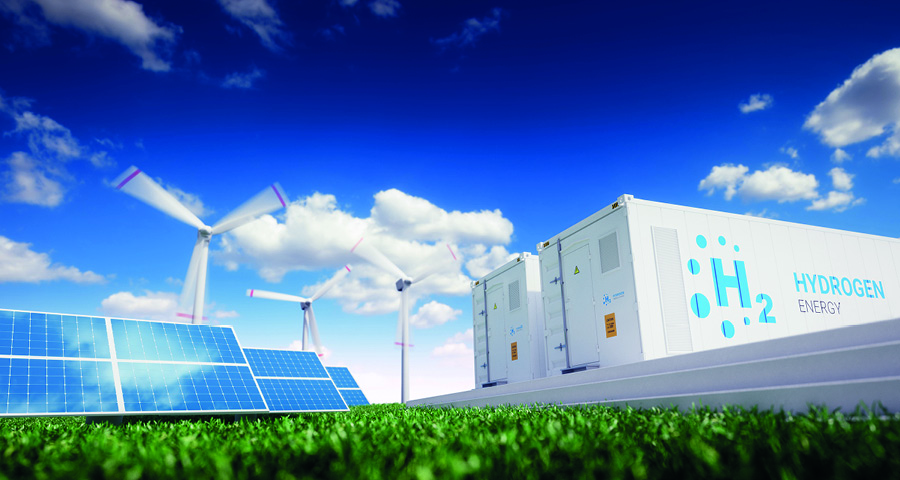Based on the large-scale deployment of renewable energies, which are intermittent and by nature difficult to predict, the energy transition creates greater needs for flexibility and storage to stabilize grids and meet market demand.
Hydrogen, an essential factor for a successful energy transition
Alongside “traditional” electricity storage solutions, such as pumped-storage hydroelectricity and batteries, in order to offer efficient storage (in gas or liquid form) and to promote the bulk reuse of surplus renewable electricity, hydrogen appears to be an essential, flexible, and competitive solution.
Hydrogen is the only energy carrier that enables the storage of surplus electricity and its reuse across multiple applications in industry, transport and energy.
Used as a fluid in industrial processes, converted into clean fuel for low-emissions vehicles, or used to facilitate storage and flexibility for electricity and gas networks: low-carbon hydrogen – produced from the electrolysis of water using renewable electricity – plays a central role in the new energy landscape.
This capacity to adapt to multiple sectors, and the possibility of sector coupling (for example, an industrial use for hydrogen coupled with a hydrogen station to meet needs for low-emission mobility) are among hydrogen’s key benefits.
When produced from renewable energies, hydrogen generates no polluting particle emissions nor carbon at the point of use, thereby participating in the decarbonization of all areas of the economy, and facilitating the emergence of a more carbon-neutral social model. It has now been integrated into a growing number of government roadmaps, and through the development of international coalitions.
According to the Hydrogen Council*, hydrogen will play a key role in our energy transition by helping to reduce Co2 emissions by 80 gigatonnes by 2050 (“Hydrogen for Net-Zero” – November 2021). By 2050, hydrogen could represent up to 22% of total global energy demand. Markets related to hydrogen and its technologies would represent more than 600 billion dollars by 2030 and 30 million jobs worldwide.
Industry, mobility, energy: the markets covered by McPhy are core factors in the environmental, economic and social challenges of the energy transition currently taking place all over the world.
Thanks to its hydrogen production and distribution equipment, McPhy is ideally placed to become a key player in the market.
How is hydrogen produced?
Water electrolysis is a mature and clean technology for producing low-carbon hydrogen.
As the main component of the sun, hydrogen is “the most abundant element in the universe”.
However, it does not exist naturally (in the form of déposits) – it must be produced, which is why we call it an energy carrier.
On earth, the most common source of hydrogen is water, which combines atoms of hydrogen and oxygen. McPhy’s electrolysis technology makes it possible to create an electrochemical reaction between water and electricity in order to isolate the hydrogen atom.
Learn more about our technology
How do McPhy’s electrolyzers work?
McPhy Electrolyzers = Water + Electricity = Hydrogen
Water + Renewable Electricity = Renewable Hydrogen or “Clean Hydrogen”
To learn more about the electrolysis: visit this page.
Drawing on renewable energy, clean hydrogen works toward the implementation of energy systems, with the following objectives:
- Decarbonize: pairing renewable energy, zero CO2 and zero particles,
- Decentralize: production and utilization of local energy
- Optimize: utilization of production surplus, intelligent grid management
1The “Hydrogen Council” is a global initiative that brings together more than 150 international companies (2022) leaders in energy, transport and industry to share their vision and ambition for hydrogen as an accelerator of the energy transition.









